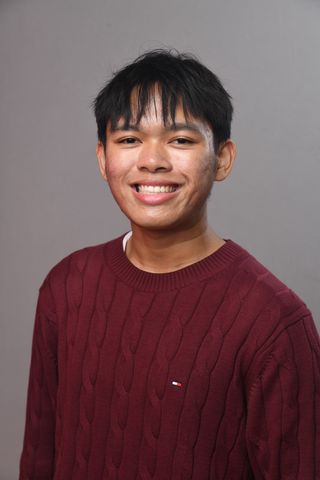Attending the PRIMA Annual Conference as a scholarship recipient was a transformative experience that significantly enhanced my understanding of public risk management. This annual event gathers professionals all over the country and offers over 50 interactive sessions and workshops, providing an invaluable educational opportunity.
Before I go any further, allow me to explain my findings about public risk management and PRIMA to all future scholarship recipients, or anyone in general, who still doesn’t have any idea what all this is about.
Public risk management plays a crucial role in ensuring that public organizations, such as cities, schools, and local governments, operate safely and maintain financial stability. Risk managers in the public sector are responsible for addressing a variety of issues, including employee safety, property protection and legal liabilities. Their ultimate goal is to safeguard public resources, covering responsibilities such as public safety, emergency preparedness and environmental protection. In easy words, public risk management is similar to being a guardian or caretaker of a playground. The risk manager's job is to make sure all the equipment is safe to use, like checking swings and slides for any dangers. They also ensure that everyone plays by the rules and doesn't get hurt, while making sure the playground stays clean and well-maintained for everyone to enjoy safely.
PRIMA, like a specialized toolbox, is a non-profit organization. It serves as a dedicated resource hub, much like a well-stocked workshop, providing professionals in public risk management with essential tools such as conferences, seminars, publications and webinars. These resources are designed to help members craft efficient strategies for tackling the distinctive challenges they encounter. In equipping public risk managers with these tools, PRIMA ensures they are well-prepared to handle and minimize risks effectively.
Arrival and Initial Impressions
Next, let me explain how the first day went, as it's the most crucial time for all the scholars who might be clueless about what happens after they get there.
My journey began with an early arrival at the hotel at 5:55 AM, much earlier than I had anticipated. Fortunately, the hotel staff accommodated my early check-in, allowing me to rest before the day's activities. The conference commenced with a President's Reception at 4:45 PM, where I met fellow scholarship recipients and mentors. Despite initial concerns about feeling out of place, the warm and friendly atmosphere quickly put me at ease. The reception provided an opportunity to introduce ourselves and connect with several experienced risk managers, including PRIMA's former president, Laurie Olson.
After that, the conference featured a welcome reception and dinner at 6:30 PM, where I enjoyed delicious food and made additional connections, including with Michael Cale from Wilber Company. His insights about his company and his motivation to help people resonated with my own aspirations.
Favorite Session and Conference Experience
Throughout the PRIMA Annual Conference, three general sessions stood out, but my favorite was Greg Offner’s "The Tip Jar Culture." Before attending the sessions, I thoroughly researched each speaker to understand their backgrounds and the topics they would be discussing. This preparation allowed me to engage more deeply with the content. Greg Offner's journey was particularly intriguing, he transitioned from being a corporate HR consultant and professional dueling piano player to a keynote speaker and corporate consultant after suffering severe voice damage and undergoing 15 surgeries. His presentation was both entertaining and highly informative, offering valuable insights into creating a desirable organizational culture.
Greg Offner's session, "The Tip Jar Culture," provided a wealth of practical insights into creating an engaging and appreciative organizational culture. His journey and the concepts he introduced were both inspiring and applicable, offering valuable lessons for enhancing employee engagement, appreciation and overall organizational performance. This session stood out to me not only for its content but also because my prior research helped me fully appreciate the depth and relevance of Offner's insights.
The conference offered a wide range of sessions and workshops, each presenting unique perspectives and solutions to various challenges in risk management. But my favorite feature is not any conference speech, it is the Business Exchange. It provided a unique opportunity to meet with risk managers individually and gain insights into their specific roles and organizational operations. Again, here I met Michael Cale at his company’s booth, and he has been such a good 'unofficial' PRIMA mentor to me. This session underscored the collaborative spirit among public risk managers, in contrast to the competitive nature often found in the private sector.
Networking was a significant aspect of the conference experience. I also had the opportunity to meet a retired public risk manager who shared invaluable financial advice, including details about his million-dollar pension, a revelation that was both surprising and inspiring.
*The views and opinions expressed in the Public Risk Management Association (PRIMA) blogs are those of each respective author. The views and opinions do not necessarily reflect the official policy or position of PRIMA.*

By: Shammil Shamsuri
Quantitative Risk Management and Insurance Major, St. John's University
Shammil is a 19-year-old international student from Malaysia and currently a first-year student majoring in quantitative risk management and insurance at St. John’s University. Growing up, Shammil really had a deep connection with mathematics and started to build on the fundamentals from middle school. He spent most of his time practicing math problems until he garnered the feeling of satisfaction on the topic. Shammil’s curiosity in the risk management field began to emerge immediately after he discovered the role of Chief Risk Officer (CRO), which he decided to pursue as a future career goal. Shammil’s personality and the position of CRO are aligned in the sense that he loves to solve problems using critical thinking and organization. He is also keenly aware of the “risks” that may occur in the future. Shammil is the youngest of two siblings.



